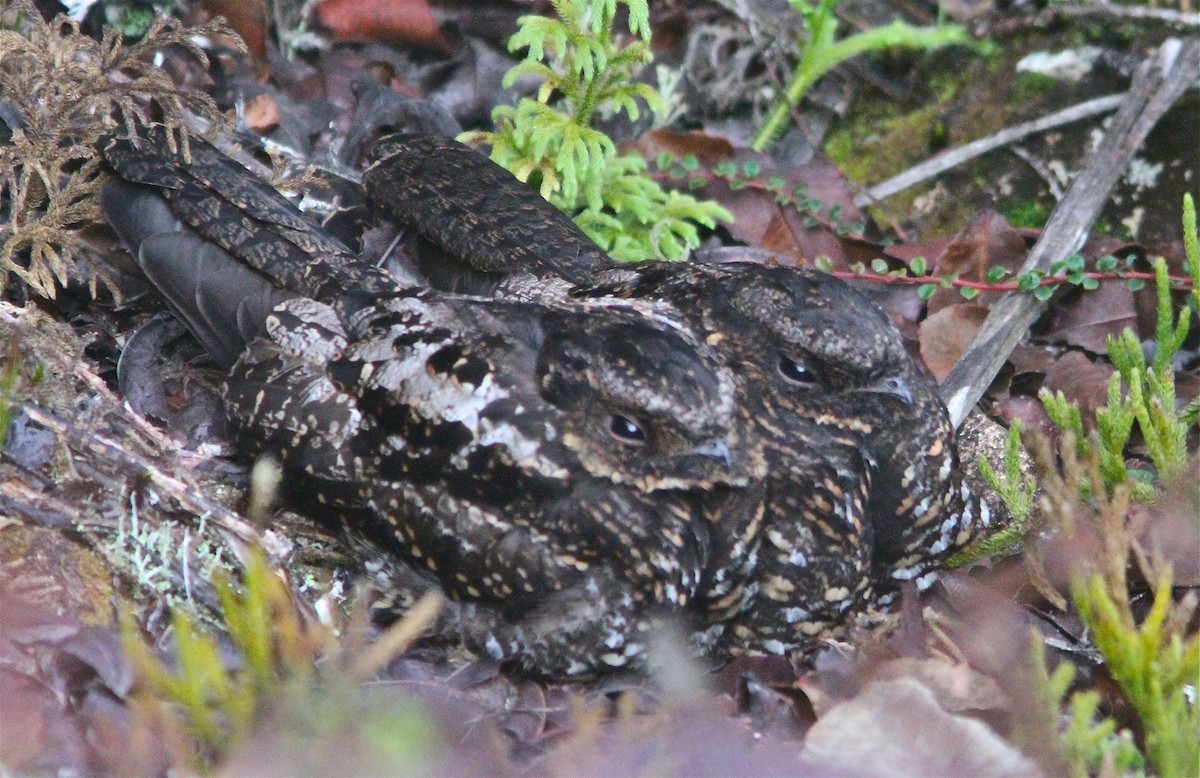Satanic Nightjar
A species of Australasian Eared Nightjars, Also known as Sulawesi Eared-nightjar Scientific name : Eurostopodus diabolicus Genus : Australasian Eared Nightjars
Satanic Nightjar, A species of Australasian Eared Nightjars
Also known as:
Sulawesi Eared-nightjar
Botanical name: Eurostopodus diabolicus
Genus: Australasian Eared Nightjars
Content
Description General Info
 Photo By Don Roberson
Photo By Don Roberson Description
The Satanic nightjar measures about 27 cm long. It has a white to buff-colored collar at its throat, blackish head, greyish-brown back, barred brown belly, and white spots on its 3rd and 4th outer primaries. It can be distinguished from other nightjars in the area by its dark color and the absence of ear tufts, white tail, and wing patches. 
Size
26 cm
Nest Placement
Ground
Feeding Habits
Satanic Nightjar consumes primarily nocturnal insects like moths, catching prey mid-flight at dawn or dusk along forest edges. Precise diet details are scarce.
Habitat
The satanic Nightjar predominantly resides in primary forests, utilizing clearings, openings, and edges near roads or tracks for roosting and nesting. This species adapts to lowland, hill, and montane forests, including lightly logged regions. It shows a preference for natural and man-made forest clearings.
Dite type
Insectivorous
General Info
Feeding Habits
Bird food type
Distribution Area
The Satanic nightjar is restricted to Sulawesi, Indonesia. It inhabits lowland and mountain rainforests of the region from 250 to 2300 meters above sea level. It seems to favour edge habitats with low canopies and groves of palms and rattans. It can be found in forest clearings, as well as open spaces created by roads and trails in old-growth forests. While it has mostly been sighted in the north and central parts of the island, its range could extend over all of Sulawesi. 
Species Status
The IUCN red list ranks the Satanic nightjar as vulnerable. Its population is small, sparse, and confined within a limited range. It is estimated that there are between 2500-10000 mature individuals in the population, and this number is declining. It is mostly threatened by habitat loss due to urban development, agriculture (such as coconut plantations), logging, rattan harvesting, and mining, even in protected areas as some of these activities are done illegally. Most of the lowland forest of the region has largely vanished or become fragmented. Between 1990 and 2000 alone, 20% of forest cover was lost in the region. Regenerated secondary growth forests do provide habitat, but seem to harbour a smaller diversity of endemic Sulawesi birds than old-growth forests. Despite its small distribution, the bird can adapt to disturbed areas better than previously assumed as it uses the edge habitat along deforested areas. It has been sighted in two protected areas and ranges farther south than once thought. Because of this, some suggest its status should be downgraded to near threatened. No current programs are underway to monitor, manage, or raise awareness about the bird, and further surveys are needed to ascertain its distribution, requirements, and status. 

 Photo By Don Roberson
Photo By Don Roberson Scientific Classification
Phylum
Chordates Class
Birds Order
Nightjars and Relatives Family
Nightjars and nighthawks Species
Satanic Nightjar